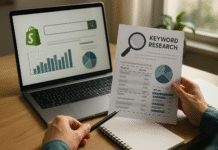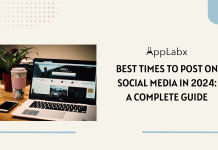Key Takeaways
- Optimize your LinkedIn profile: Use a square profile image with dimensions of at least 400 x 400 pixels to ensure a clear and recognizable representation.
- Make a lasting impression with your cover image: Create a visually captivating banner using the recommended dimensions of 1584 x 396 pixels, aligning with your personal brand or company vision.
- Enhance engagement with optimized post images: Utilize images sized at 1200 x 627 pixels to attract viewers and convey your message effectively in the LinkedIn feed. High-quality visuals and mobile-friendly considerations are key for success.
Welcome to our comprehensive guide on LinkedIn image sizes.
In today’s digital landscape, visual content plays a crucial role in establishing a strong online presence, and LinkedIn is no exception.
As a professional networking platform, LinkedIn offers a myriad of opportunities to showcase your personal brand, connect with industry peers, and attract potential employers or clients.
One of the key elements that can significantly impact your LinkedIn profile’s visual appeal and effectiveness is the correct sizing of your images.
In this blog post, we will provide you with a detailed LinkedIn image size cheat sheet, focusing on the ideal dimensions for profile, cover, and post images.
By following these guidelines, you will be able to create visually captivating profiles, engaging cover images, and attention-grabbing posts that resonate with your audience and maximize your LinkedIn presence.
First impressions matter, and your LinkedIn profile image is often the first visual element that viewers encounter.
A compelling profile image instantly establishes credibility, professionalism, and approachability.
To ensure that your profile image looks its best, it is crucial to adhere to the recommended dimensions.
LinkedIn suggests an ideal profile image size of 400 x 400 pixels.
This dimension ensures that your image displays clearly, without any pixelation or distortion. Remember to select a high-resolution image that accurately represents your professional identity.
Moving on to the cover image, this large banner at the top of your LinkedIn profile provides an excellent opportunity to showcase your personal branding.
Whether you want to display your expertise, highlight your achievements, or convey your company’s vision, a carefully crafted cover image can leave a lasting impression on visitors.
LinkedIn recommends a cover image size of 1584 x 396 pixels.
By following this guideline, your cover image will fit perfectly and retain its clarity across different devices and screen sizes. Don’t forget to leverage this space to communicate your unique value proposition and engage your audience visually.
When it comes to LinkedIn posts, incorporating eye-catching visuals can significantly enhance engagement and improve the chances of your content being shared.
According to LinkedIn’s guidelines, the ideal image size for post images is 1200 x 627 pixels.
By optimizing your images to this dimension, you ensure that they display seamlessly within the LinkedIn feed, capturing the attention of your connections and followers.
Keep in mind that a significant portion of LinkedIn users access the platform via mobile devices, so it’s crucial to test your post images on various screen sizes and ensure they remain visually appealing and legible.
In addition to profile, cover, and post images, there are a few additional tips and best practices worth considering for optimizing your visual content on LinkedIn.
For example, it’s essential to preview your images on different devices and platforms to ensure they appear as intended. What may look perfect on a desktop screen might be cropped or distorted on a mobile device.
Additionally, balancing image quality with file size is crucial for maintaining fast loading times, especially on mobile connections.
Fortunately, there are various online tools and resources available that can help you resize and optimize your images without sacrificing quality.
As you navigate the world of LinkedIn, it’s essential to pay attention to the finer details, such as image sizes.
By adhering to the recommended dimensions outlined in this LinkedIn image size cheat sheet, you can ensure that your profile, cover, and post images present a cohesive and visually appealing brand identity.
A carefully curated visual presence not only enhances your professionalism but also increases your chances of making meaningful connections, attracting job opportunities, and growing your influence in your industry.
In the following sections of this blog post, we will delve deeper into each image type, providing practical tips, examples, and step-by-step instructions to help you optimize your visuals on LinkedIn.
So, let’s dive in and uncover the secrets to creating captivating profile images, captivating cover images, and engaging post images on LinkedIn
Before we write more about this article, we like to share who we are.
About AppLabx
From developing a solid marketing plan on LinkedIn to creating compelling content on LinkedIn, optimizing for search engines, leveraging social media, and utilizing paid advertising on LinkedIn, AppLabx offers a comprehensive suite of digital marketing services on LinkedIn designed to drive growth and profitability for your business.
AppLabx is well known for helping companies and startups use LinkedIn Marketing to drive web traffic to their websites and web apps.
At AppLabx, we understand that no two businesses are alike. That’s why we take a personalized approach to every project, working closely with our clients to understand their unique needs and goals, and developing customized strategies to help them achieve success.
If you need a digital consultation, then send in an inquiry here.
LinkedIn Image Size Cheat Sheet: The Ideal Dimensions for Marketers
- LinkedIn Profile Image Size
- LinkedIn Cover Image Size
- LinkedIn Post Image Size
- Additional Tips and Best Practices for Optimizing Visual Content on LinkedIn
1. LinkedIn Profile Image Size
Your LinkedIn profile image is not just a small thumbnail; it’s your digital first impression.
When someone visits your profile, your profile image is one of the first elements they notice.
It serves as a visual representation of your professional identity and helps establish trust and credibility. To ensure your profile image stands out and makes a positive impact, it’s crucial to adhere to the recommended image size.
LinkedIn recommends an ideal profile image size of 400 x 400 pixels.
This dimension ensures that your image displays clearly without any distortion or pixelation. By following this guideline, your profile image will appear sharp and professional on both desktop and mobile devices. It’s important to note that LinkedIn automatically resizes your profile image to fit different areas of the platform, such as search results, connection lists, and notifications. Therefore, it’s essential to upload a high-resolution image that can be scaled down without losing quality.
When selecting a profile image, choose one that accurately represents your professional identity. A high-quality headshot with good lighting and a clear view of your face is recommended. Dress professionally and consider the industry you’re in. For example, if you work in a creative field, you might opt for a slightly more relaxed or artistic style, while a formal business setting might require a more traditional and polished look.
Let’s explore a few examples of effective LinkedIn profile images:
- John Smith, Digital Marketing Professional: John’s profile image shows him dressed in business attire, with a friendly smile and good eye contact. The image is well-lit and focused, allowing his face to be the focal point. The 400 x 400-pixel dimensions maintain the image’s clarity and make it instantly recognizable in search results and connection lists.
- Sarah Johnson, Graphic Designer: Sarah’s profile image showcases her creativity and expertise in graphic design. She chose a slightly more relaxed and artistic style, capturing her in her design studio surrounded by colorful artwork. Despite the creative setting, the image still adheres to the recommended 400 x 400-pixel size, ensuring that it maintains its quality across LinkedIn.
- Michael Thompson, Financial Advisor: Michael’s profile image exudes professionalism and trustworthiness. He opted for a traditional headshot with a suit and tie, reflecting his role as a financial advisor. The 400 x 400-pixel size allows his image to be easily recognized, even in a crowded search result page.
In addition to the image size, it’s important to optimize your profile image for visibility and discoverability. Use relevant keywords in your profile’s headline, summary, and experience sections to enhance your chances of appearing in relevant search results. By associating your profile image with relevant industry keywords, you increase the likelihood of attracting connections and opportunities from individuals and companies in your field.
Remember, your LinkedIn profile image should represent the professional image you want to portray. It’s an opportunity to make a positive first impression and capture the attention of potential employers, clients, or collaborators. By adhering to the recommended profile image size of 400 x 400 pixels and selecting a high-quality image that aligns with your professional brand, you can create a visually appealing and impactful LinkedIn presence.
2. LinkedIn Cover Image Size
Your LinkedIn cover image is a powerful visual tool to capture attention, communicate your personal brand, and make a lasting impression on visitors to your profile. This large banner at the top of your LinkedIn profile provides an opportunity to showcase your expertise, highlight your achievements, or convey your company’s vision. To ensure your cover image looks its best and aligns with LinkedIn’s specifications, it’s essential to follow the recommended image size.
LinkedIn recommends a cover image size of 1584 x 396 pixels. This dimension ensures that your cover image appears clear, well-proportioned, and retains its quality across different devices and screen sizes. By adhering to this guideline, you can create a visually appealing cover image that resonates with your audience and sets the tone for your professional presence.
When designing your LinkedIn cover image, consider the following tips and best practices:
- Relevant Visual Content: Choose visuals that align with your personal brand or professional goals. For example, if you work in marketing, you might incorporate elements related to branding, digital campaigns, or data analysis. If you’re a writer, you could include images of books, a cozy writing space, or typewriter imagery. Aligning your cover image with your industry or area of expertise helps create a cohesive and memorable visual identity.
- Clear and Engaging Message: Your cover image should convey a clear message or evoke a specific emotion. Consider the purpose of your LinkedIn presence and what you want to communicate to your audience. Are you looking to showcase your creativity, leadership skills, or industry knowledge? Use text overlays, visual elements, or relevant images to convey your message effectively.
- Brand Consistency: Ensure that your cover image aligns with your personal brand or the branding of your company. Incorporate your brand colors, typography, or logo if appropriate. Consistency in visual elements helps create a cohesive and professional impression. However, be mindful of not overcrowding the cover image with excessive branding elements, as it may distract from the main message.
Now, let’s explore a few examples of impactful LinkedIn cover images:
- Mark Johnson, Leadership Coach: Mark’s cover image features an inspiring landscape with a mountain peak. The image’s dimensions of 1584 x 396 pixels ensure that it fits perfectly across all devices. The use of a mountain peak conveys leadership, growth, and overcoming challenges—attributes associated with Mark’s coaching services. The image creates an immediate visual impact and aligns with his personal brand.
- Jane Rodriguez, Technology Entrepreneur: Jane’s cover image showcases a futuristic cityscape with vibrant colors. The image complements her role as a technology entrepreneur and conveys innovation and forward-thinking. With the recommended cover image size, the cityscape appears sharp and captivating, capturing the attention of visitors to her profile.
- Lisa Thompson, Health and Wellness Consultant: Lisa’s cover image features a serene and nature-inspired scene with a calming color palette. The image evokes a sense of well-being and aligns with Lisa’s role as a health and wellness consultant. The 1584 x 396-pixel size ensures that the image is well-displayed and sets the desired mood for her profile visitors.
When creating your LinkedIn cover image, it’s crucial to test and preview it on different devices to ensure it appears as intended.
Remember to consider the placement of your profile picture in relation to the cover image, as they will appear together on your profile.
Adjust the cover image composition accordingly to avoid any visual conflicts.
By utilizing the recommended cover image size of 1584 x 396 pixels and incorporating relevant visuals and messaging, you can create a captivating and impactful LinkedIn cover image.
This visually engaging element will enhance your profile’s overall appearance, capture the attention of visitors, and convey your professional brand effectively.
3. LinkedIn Post Image Size
Visual content is a powerful tool for capturing attention and increasing engagement on social media platforms, including LinkedIn.
When it comes to sharing posts on LinkedIn, incorporating eye-catching and properly sized images can significantly enhance the impact of your content and attract more viewers.
To ensure your post images appear visually appealing and professional, it’s important to follow the recommended image size guidelines.
LinkedIn recommends an ideal image size of 1200 x 627 pixels for post images.
This dimension ensures that your images display optimally within the LinkedIn feed, capturing the attention of your connections and followers.
By adhering to this guideline, you can maintain the clarity and quality of your images across different devices and platforms.
Here are some tips and best practices to consider when optimizing your post images on LinkedIn:
- Relevance and Context: Select images that are relevant to your post content and help convey your message effectively. Whether it’s a photo, graphic, or illustration, the image should align with the topic you’re discussing and provide visual support to your written content. For example, if you’re sharing an article about workplace productivity, consider using an image that represents a productive work environment or a person engaged in focused work.
- Image Quality: Ensure that your post images are of high quality and resolution. Blurry or pixelated images can reflect poorly on your professionalism and the credibility of your content. If possible, use original images or high-quality stock photos that align with your brand or the message you want to convey. If you’re using stock photos, consider adjusting the composition or adding overlays to make them more unique and personalized.
- Mobile-Friendly Consideration: With a significant portion of LinkedIn users accessing the platform through mobile devices, it’s essential to optimize your post images for mobile viewing. Test how your images appear on different screen sizes and ensure they remain visually appealing and legible. Avoid using small text or intricate details that may become difficult to see on smaller screens.
- Image Format: LinkedIn supports various image formats, including JPEG, PNG, and GIF. Choose the format that best suits your needs and maintains the quality of your images. JPEG is often the most commonly used format for photographs and complex images, while PNG is suitable for graphics or images with transparency. If you want to include animations, consider using a GIF format, keeping in mind that excessive animations can be distracting.
Now, let’s explore a few examples of effective LinkedIn post images:
- Marketing Tips and Strategies: The post image features a visually appealing graphic with bold typography, illustrating key marketing tips and strategies. The image’s size of 1200 x 627 pixels ensures that it fits perfectly within the LinkedIn feed, catching the attention of viewers. The graphic’s design elements and color scheme are consistent with the branding of the individual or company sharing the post, creating a cohesive and professional visual identity.
- New Product Announcement: The post image showcases a high-quality photograph of the newly released product, highlighting its unique features and benefits. The 1200 x 627-pixel size allows the image to be clearly visible in the LinkedIn feed, enticing viewers to learn more about the product. The image is accompanied by a compelling caption that provides additional context and encourages engagement.
- Industry Event Promotion: The post image incorporates a captivating photograph from a previous industry event, capturing the excitement and energy of the occasion. The image’s dimensions of 1200 x 627 pixels ensure that it is displayed prominently in the LinkedIn feed, grabbing the attention of potential attendees. The image is accompanied by event details, a call-to-action, and relevant hashtags to maximize visibility and engagement.
By adhering to the recommended image size of 1200 x 627 pixels and following these best practices, you can create visually appealing and engaging post images that capture the attention of your LinkedIn connections and followers.
Remember to align your images with your content, optimize them for mobile viewing, and choose high-quality visuals that enhance the overall impact of your posts.
4. Additional Tips and Best Practices for Optimizing Visual Content on LinkedIn
Optimizing your visual content on LinkedIn goes beyond just adhering to recommended image sizes.
To make the most of your visual assets and enhance their impact, consider the following tips and best practices:
- Preview on Multiple Devices and Platforms: Before posting any visual content on LinkedIn, it’s crucial to preview how it appears on different devices and platforms. Test your images on desktop, mobile devices, and various web browsers to ensure they display correctly and maintain their quality. This step helps you identify any potential issues, such as cropping, distortion, or loss of clarity, and allows you to make necessary adjustments before publishing.
- Use High-Quality and Relevant Images: High-quality images grab attention and create a positive impression. Whenever possible, use original images or choose from reputable stock photo websites that offer professional-grade visuals. Ensure that the images you select align with your content and convey the desired message effectively. For example, if you’re writing a blog post about team collaboration, consider using an image that showcases a diverse group of professionals working together.
- Consider Branding and Consistency: Maintain consistency in your visual content to strengthen your personal brand or company identity. Use consistent colors, fonts, and design elements that reflect your brand’s style and values. Incorporate your logo or brand elements when appropriate, but be mindful of not overwhelming the visual composition. Consistency helps reinforce recognition and reinforces a cohesive brand experience for your audience.
- Add Text Overlays for Clarity: When sharing images with text or captions, consider adding text overlays to ensure legibility, especially when viewed on smaller screens or in the LinkedIn feed. Use clear and easy-to-read fonts that are consistent with your brand and choose contrasting colors to make the text stand out. Avoid overcrowding the image with too much text, keeping it concise and impactful.
- Engage with Relevant Visual Content: Visual content on LinkedIn extends beyond your own posts. Engaging with other users’ visual content can help expand your network and increase visibility. Like, comment, and share images that align with your interests, industry, or areas of expertise. By actively engaging with visual content, you can build relationships, establish yourself as a thought leader, and attract attention to your own visual assets.
- Test Different Visual Formats: Don’t limit yourself to static images. Explore different visual formats to add variety and engagement to your LinkedIn content. Consider creating infographics, videos, slideshows, or animated GIFs to convey information or tell stories. Experimenting with different visual formats allows you to cater to different learning styles and capture the interest of your audience.
- Optimize Image Alt Text: Image alt text is an important element for accessibility and search engine optimization. When uploading images to LinkedIn, include descriptive alt text that accurately represents the content of the image. This helps visually impaired individuals who use screen readers understand the context of the image. Additionally, search engines may use alt text to understand and index your visual content, potentially improving its discoverability.
By incorporating these additional tips and best practices into your visual content strategy on LinkedIn, you can maximize the impact of your visual assets, enhance engagement, and strengthen your personal or professional brand.
Visual content plays a vital role in capturing attention, conveying messages effectively, and increasing engagement on LinkedIn.
By following recommended image sizes, previewing your content on multiple devices, using high-quality visuals, maintaining consistency, and engaging with relevant content, you can leverage the power of visual storytelling to stand out and make a lasting impression on the LinkedIn platform.
Conclusion
Understanding and implementing the ideal image sizes for your LinkedIn profile, cover, and post images is crucial for creating a visually appealing and professional presence on the platform.
By following the recommended dimensions, you can ensure that your images appear clear, well-proportioned, and optimized for different devices and screen sizes.
Your LinkedIn profile image is the first impression you make on visitors, so it’s essential to use a square image with a size of 400 x 400 pixels or larger.
This allows for a clear and recognizable representation of yourself or your brand. Remember to choose a professional and high-quality photo that reflects your personal brand or the image you want to project to your connections.
The cover image on your LinkedIn profile provides an opportunity to showcase your expertise and make a lasting impression.
With the recommended size of 1584 x 396 pixels, you can create a visually captivating banner that aligns with your personal brand or conveys your company’s vision.
Choose relevant visuals, incorporate a clear message, and maintain brand consistency to create a compelling cover image that resonates with your audience.
When it comes to LinkedIn post images, the recommended size of 1200 x 627 pixels ensures that your visuals appear optimized in the LinkedIn feed.
By selecting high-quality and relevant images, you can enhance the impact of your posts and attract more viewers.
Consider the context of your content, optimize for mobile viewing, and test your images on different devices to ensure they maintain their quality and legibility.
Throughout this blog, we’ve explored additional tips and best practices for optimizing visual content on LinkedIn.
By previewing your images on multiple devices and platforms, using high-quality and relevant visuals, maintaining branding consistency, adding text overlays for clarity, engaging with relevant content, testing different visual formats, and optimizing image alt text, you can take your visual presence on LinkedIn to the next level.
Remember, the goal of leveraging the ideal image sizes and implementing these best practices is to make a strong and memorable impression on LinkedIn.
Visual content has the power to capture attention, convey messages effectively, and increase engagement.
By optimizing your images, you can enhance your personal or professional brand, attract more connections and followers, and create meaningful interactions within the LinkedIn community.
So, take the time to review and adjust your LinkedIn image sizes, create visually appealing visuals, and embrace the opportunity to showcase your expertise, highlight your achievements, and share compelling content.
By incorporating these practices into your LinkedIn strategy, you’ll be well on your way to making a lasting impact in the professional world.
Now that you have the LinkedIn image size cheat sheet and the knowledge to optimize your visuals, it’s time to put it into practice. Enhance your LinkedIn presence, stand out from the crowd, and seize the opportunities that this professional networking platform offers.
Get ready to captivate, engage, and leave a lasting impression with perfectly sized and optimized images on LinkedIn.
If you are looking for a top-class digital marketer, then book a free consultation slot here.
If you find this article useful, why not share it with your friends and business partners, and also leave a nice comment below?
We, at the AppLabx Research Team, strive to bring the latest and most meaningful data, guides, and statistics to your doorstep.
To get access to top-quality guides, click over to the AppLabx Blog.
People Also Ask
What size is a LinkedIn post with an image?
The recommended size for a LinkedIn post with an image is 1200 x 627 pixels, ensuring optimal display and engagement within the LinkedIn feed.
What size are LinkedIn photos?
LinkedIn recommends a photo size of 400 x 400 pixels or larger for profile pictures, 1584 x 396 pixels for cover images, and 1200 x 627 pixels for post images.
What size is a LinkedIn square image?
A LinkedIn square image typically has a recommended size of 400 x 400 pixels or larger, ensuring a clear and recognizable representation on your profile.


































